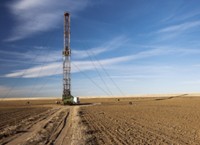Advertisement
Grab your lab coat. Let's get started
Welcome!
Welcome!
Create an account below to get 6 C&EN articles per month, receive newsletters and more - all free.
It seems this is your first time logging in online. Please enter the following information to continue.
As an ACS member you automatically get access to this site. All we need is few more details to create your reading experience.
Not you? Sign in with a different account.
Not you? Sign in with a different account.
ERROR 1
ERROR 1
ERROR 2
ERROR 2
ERROR 2
ERROR 2
ERROR 2
Password and Confirm password must match.
If you have an ACS member number, please enter it here so we can link this account to your membership. (optional)
ERROR 2
ACS values your privacy. By submitting your information, you are gaining access to C&EN and subscribing to our weekly newsletter. We use the information you provide to make your reading experience better, and we will never sell your data to third party members.
Policy
Inaction On CO2 Assailed
Congressional subpoena, lawsuit lodged against Bush Administration
by Cheryl Hogue
April 7, 2008
| A version of this story appeared in
Volume 86, Issue 14
THE BUSH ADMINISTRATION is facing attacks from Congress and in court over its delay in determining whether carbon dioxide emissions pose a danger to the public and require regulation.
Last week, a House committee subpoenaed internal EPA documents purportedly showing that the agency concluded at the end of 2007 that CO2 emissions endanger the public. And 18 states, joined by environmental groups, asked a federal court to set a deadline for the agency to issue a decision on CO2.
If EPA determines that CO2 poses a danger to the public, the agency must regulate emissions of this greenhouse gas from vehicles. Under the Clean Air Act, this would lead the agency to control CO2 releases from other sources, too, including factories and power plants.
The congressional subpoena and the federal lawsuit came on April 2, the one-year anniversary of a Supreme Court ruling that ordered EPA to determine whether CO2 emissions from cars and trucks endanger public health or welfare. In the 2007 decision, the court also agreed with a dozen states, three cities, and several environmental groups that CO2 is a pollutant that EPA can regulate under the Clean Air Act (C&EN, April 9, 2007, page 9).
In the past year, EPA Administrator Stephen L. Johnson had told Congress that the agency would make the so-called endangerment determination by the end of 2007. But in a March 27 letter to Congress, Johnson announced that the agency first will ask the public for comments and then spend months analyzing the information supplied before reaching a conclusion. Under this plan EPA won't decide whether CO2 emissions pose a danger until after a new president takes office in January 2009.
Yet at the end of 2007, EPA already had determined that CO2 emissions from vehicles do endanger public health or welfare, agency staff members have told the House Committee on Oversight & Government Reform. EPA forwarded this finding, which Johnson signed, to the White House for review in December 2007, according to that committee.
"No finding has been completed," EPA spokesman Jonathan Shradar says. "There were draft materials prepared," he acknowledges, adding that the Supreme Court set no deadline for the agency to make its determination.
The unusual move of issuing a subpoena requiring EPA to hand over documents related to the CO2 determination came from the House Select Committee on Energy Independence & Global Warming. Democrats and Republicans on the committee voted 12-0 in favor of the subpoena.
Johnson, in his letter to Congress, said he delayed EPA's decision on CO2 because of an energy law enacted in December 2007 that boosts vehicle fuel economy and because of the broad regulatory impact an endangerment finding would trigger. "Rather than rushing to judgment on a single issue, this approach allows us to examine all the potential effects of a decision with the benefit of the public's insight," Johnson wrote.
But the states and environmental groups say EPA's determination must be based on scientific data, not on potential regulatory effects of the agency's conclusion. They asked a federal appeals court to order EPA to make its decision within 60 days.






Join the conversation
Contact the reporter
Submit a Letter to the Editor for publication
Engage with us on Twitter